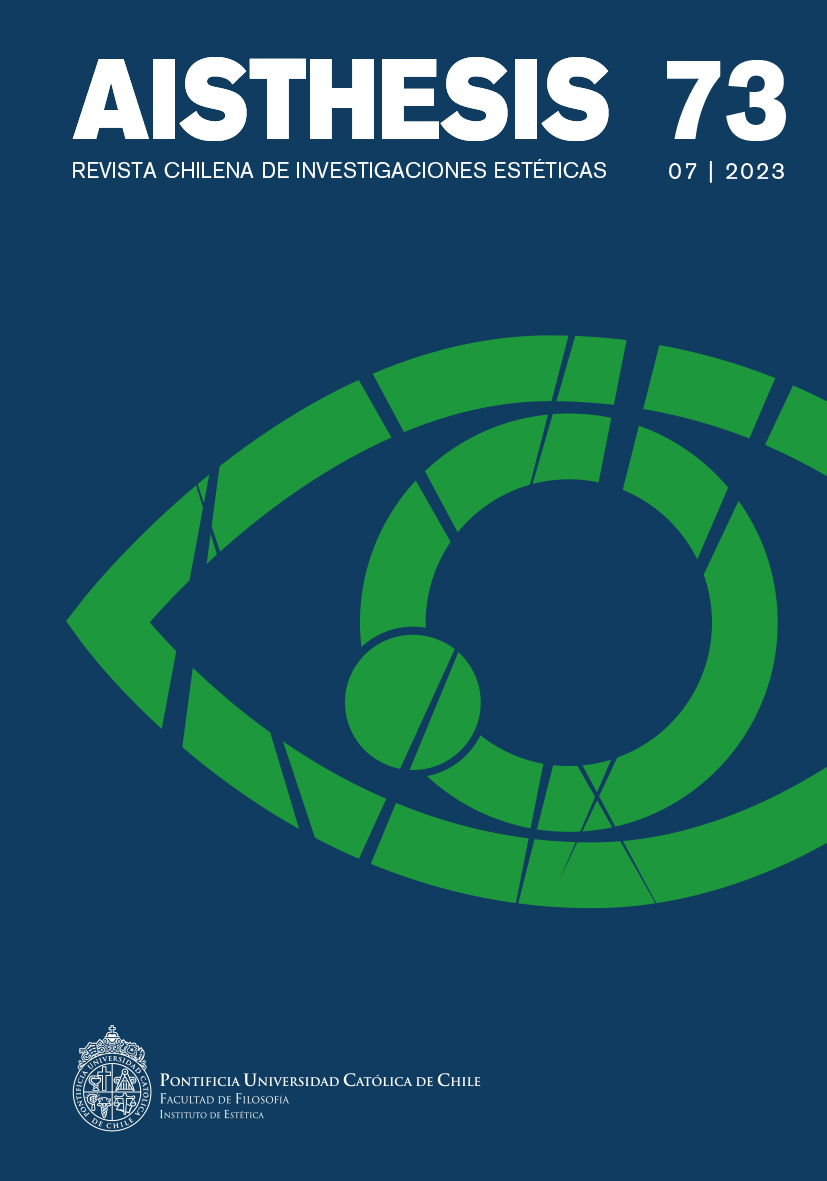Subverting Drug Violence in Two Mexican Films. Noche de fuego (2021) by Tatiana Huezo and Sin señas particulares (2020) by Fernanda Valadez
Main Article Content
Abstract
Since the War on Drug launched by Felipe Calderón, there has been a rise in the "spectacle of violence" (Berlanga “El espectáculo”), that is, an excessive exhibition of violence both in media and cultural products. This aesthetic entails the risk of naturalizing violence, so it becomes necessary to think of other ways of representing the unrepresentable. This article focuses on the films Prayers for the stolen (2021) by Tatiana Huezo and Identifying features (2020) by Fernanda Valadez. In them, resistance mechanisms are established through counter-pedagogies (Segato) such as empathy and communities of affection. Using the off-screen, the films show the inability to represent horror and distance themselves from the common representation of violence.
Downloads
Article Details

This work is licensed under a Creative Commons Attribution-NonCommercial-ShareAlike 4.0 International License.
All contents of this electronic edition are distributed under the Creative Commons license of "Attribución-shareAlike 4.0 Internacional" (CC-BY-SA). Any total or partial reproduction of the material must mention its origin.
The rights of academic works published in this publication belong to their authors., who grant to AISTHESIS: Revista Chilena de Investigaciones Estéticas the license for its use. The management of the permits and the authorization of the publication of the images (or of any material) that contains copyright and its consequent rights of reproduction in this publication is the sole responsibility of the authors of the articles
References
Agamben, Giorgio. Homo sacer: el poder soberano y la nuda vida. Valencia, Pre-textos, 1998.
Aumont, Jacques. La imagen. Barcelona, Paidós, 1992.
Berlanga, Mariana. “El espectáculo de la violencia en el México actual: del feminicido al juvenicidio”. Athenea Digital, vol. 15, núm. 4, 2015, pp.105-128.
---. Una mirada al feminicidio. Chihuahua, Ítaca, 2018.
Bonitzer, Pascal. El campo ciego. Buenos Aires, Santiago Arcos, 2007.
Butler, Judith. Sin miedo. Formas de resistencia a la violencia de hoy. Ciudad de México, Penguin Random House, 2021.
Clement, Jennifer. Ladydi. Barcelona, Lumen, 2014.
Deleuze, Gilles. La imagen en movimiento. Estudios sobre cine 1. Barcelona, Paidós, 1983.
Escalante, Amat (director). Heli. Ciudad de México, Tres Tunas, Mantarraya Producciones, 2013.
Guillén, Alejandra; Mago Torre y Marcela Turati. “El país de las 2 mil fosas”. Quinto Elemento Lab. 12 noviembre de 2018, https://quintoelab.org/project/el-pais-de-las-2-mil-fosas
Herrera, Yuri. Trabajos del reino. Cáceres, Periférica, 2008.
Huezo, Tatiana. Noche de fuego. Ciudad de México, Pimienta Films, 2021.
Lejeune, Philippe. El pacto autobiográfico y otros estudios. Madrid, Megazul Endymion, 1994.
Murillo, Ilse y José Salvador Arellano. “Apuntes sobre la violencia en el cine mexicano contemporáneo. Una reflexión ético-moral en torno a Heli (Amat Escalante, 2013)”. Dilemata, núm. 30, 2019, pp. 199-216.
Nora, Pierre. “Entre Memoria e Historia: La problemática de los lugares”. Les Lieux de mémoire; 1: La République, editado por Nora Pierre. Paris, Gallimard, 1984, pp.17-49.
Palaversich, Diana. “Narcoliteratura (¿De qué más podríamos hablar?)”. Tierra adentro. 25 septiembre de 2012, https://www.cultura.gob.mx/tierra_adentro/?p=307
Pannetier-Leboeuf, Gabrielle. “¿Víctimas del necropoder? La construcción del cuerpo femenino en el cine mexicano sobre narcotráfico”. Comunicación y Medios, núm. 36, 2017, pp. 43-54. Doi: 10.5354/rcm.v1i36.46203.
Ramírez-Pimienta, Juan Carlos. “En torno al primer narcocorrido: arqueología del cancionero de las drogas”. A contracorriente, vol. 7, núm. 3, 2010, pp. 82-99.
---. “De torturaciones, balas y explosiones: Narcocultura, Movimiento Alterado e hiperrealismo en el sexenio de Felipe Calderón”. A contracorriente, vol. 10, núm. 3, 2013, pp. 302-334.
Robledo, Carolina. “Genealogía e historia no resuelta de la desaparición forzada en México”. Íconos, revista de Ciencias Sociales, núm. 55, 2016, pp. 93-114. Doi: http://dx.doi.org/10.17141/iconos.55.2016.1854
Rosas, Edgar. “Imperialismo usa el terror, ejecuciones y desplazamientos para adueñarse de territorios: López y Rivas”. Tiempo de mujeres. 5 junio de 2015,
https://mujeresporlademocracia.blogspot.com/2015/06/imperialismo-usa-el-terror-ejecuciones.html
Santos, Danilo; Ainhoa Vásquez e Ingrid Urgelles. “Lo narco como modelo cultural. Una apropiación transcontinental”. Mitologías Hoy, vol. 14, 2016, pp. 9-23. Doi: http://dx.doi.org/10.5565/rev/mitologias.401
Segato, Rita. Contra-pedagogías de la crueldad. Buenos Aires, Prometeo, 2018.
Solórzano, Fernanda. “Heli de Amat Escalante”. Letras Libres. 6 agosto de 2013, https://letraslibres.com/cine-tv/heli-de-amat-escalante/
Valadez, Fernanda. Sin señas particulares. Ciudad de México, Nephilim Producciones, Corpulenta Producciones, Avanti Pictures, EnAguas cine, 2020.
Valencia, Sayak y Katia Sepúlveda. “Del fascinante fascismo a la fascinante violencia: Psico/bio/necro/política y mercado gore”. Mitologías Hoy, vol. 14, 2016, pp.75-91. Doi: http://dx.doi.org/10.5565/rev/mitologias.395.
